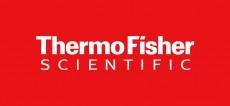Artificial tongue helps medicine go down
first of its kind - that can be used to analyse the taste profiles
of pharmaceuticals, foods and beverages.
The Taste Sensing System SA402B is already on sale in Japan, according to a spokesman for the company, who said it is the only analytical product on the market that can imitate the taste mechanisms of the human tongue.
At the heart of the system is a series of artificial lipid membranes designed to react to different taste stimuli by registering a change in membrane potential, a mechanism very close to that which occurs on the tongue. The system can measure six basic tastes - sweet, bitter, salt, sour, umami and astringency - and has been validated by comparing its results to conventional taste testing using live subjects.
Chemical tests for taste do exist, but are cumbersome and lengthy to carry out, while human panel testing is compromised by the variation in sensory expression between individuals. Inset believes that its instrument can provide an accurate, digital representation of a product's taste with a level of discrimination tenfold that of a human tongue.
The spokesman told In-PharmaTechnologist.com that while the initial push of the system in Japan has been to the food industry, Inset has latterly been targeting the pharma industry as taste is an under-addressed element of pharmaceutical product development. And this is a shame, as getting the taste of a drug formulation right could have a significant impact on the success of a product in the marketplace and patients' willingness to take it.
He envisages the SA402B will be used in product development and to differentiate product lines in the marketplace, and noted that it can also provide valuable information for shelf life.
However, despite presenting the system at the Conference on Pharmaceutical Ingredients (CPhI) meeting last week, Insent said it is currently only available in Japan, as more work needs to be done on bringing the system into compliance with the regulatory requirements in Europe and the US.
In Japan, the system costs in the region of €80,000, he said. It can measure up to 10 samples at a time in 5 to 10 minutes, and sits on the benchtop.










